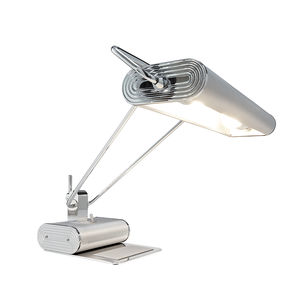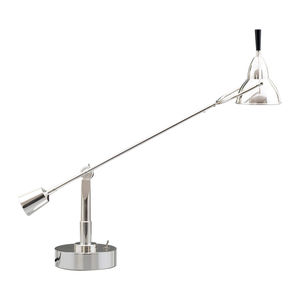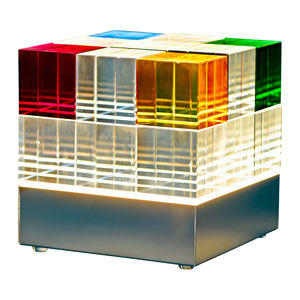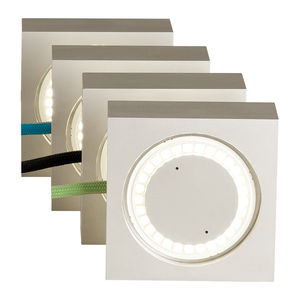
- Lighting
- Decorative Lighting
- Desk lamp
- Tecnolumen
Desk lamp EB 27metalwoodcontemporary






Add to favorites
Compare this product
Characteristics
- Type
- desk
- Material
- metal, wood
- Style
- contemporary
- Power source
- corded
- Base type
- straight
- Color
- white
- Light source
- halogen
- Number of lights
- single
- Other characteristics
- handmade
- Height
1,200 mm
(47 in)
Description
At 4.29 p.m. on 9th February, 1927 Eduard-Wilfrid Buquet feild his patent for parts of this table lamp, particularly the flexible joints, at the Ministère du Commerce et l'Industrie in Paris. Various versions were produced until the 1940's. Although little is known about Buquet we do know that he produced this lamp himself and probably designed it as well.
In his lamp from 1927, Édouard-Wilfrid Buquet interprets the search for balance as a shift in weight. In fact, he describes this poetic shift of light in his patent as a “rotatable light fixture with articulated joints”. In practical terms, this construction allows the light head to be moved into almost any conceivable position by slightly shifting the weights.
In addition to the table lamp, Buquet also developed wall and floor lamps according to the same principle. Although the French designer’s Bauhaus-style lamp became a global hit that was highly regarded and mentioned in several publications, little more is known about Buquet and his work.
We had to modify certain details for technical reasons, namely the interior of the flexible joints and the stand, which used to be made of wood. Since the small reflector will only take a small holder, we have equipped the lamp with halogen 50 Watt. The transformer is housed in the stand, which is thus made of metal. Virtually all the parts have to be handmade. The brass, which is the metal used, has been finished with a 0.9000 silver coating, and finally brushed to provide a matt surface.
Catalogs
No catalogs are available for this product.
See all of Tecnolumen‘s catalogs*Prices are pre-tax. They exclude delivery charges and customs duties and do not include additional charges for installation or activation options. Prices are indicative only and may vary by country, with changes to the cost of raw materials and exchange rates.























